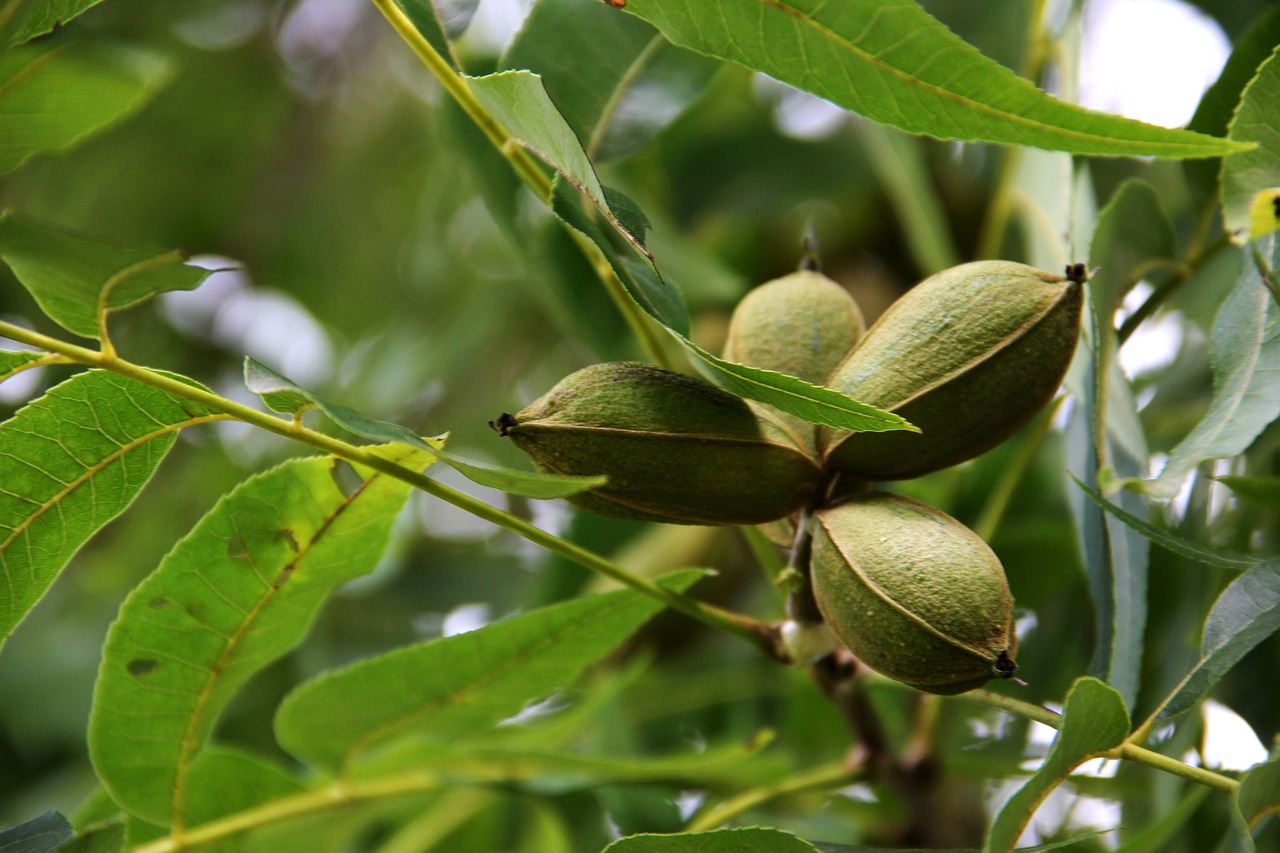Pecans
Searcy, Ark. –
Pecans are synonymous with the holidays in the south. They are native to North America,
from Texas to Illinois. Native Americans were using pecans extensively long before
the European settlers came.  They pressed the oils for seasoning, ground them into meal to thicken stews, cooked
them with beans, and roasted them for long hunting trips. While many still harvest
and use native pecans, through plant breeding, the size and quality of the nut has
grown substantially over the years.
They pressed the oils for seasoning, ground them into meal to thicken stews, cooked
them with beans, and roasted them for long hunting trips. While many still harvest
and use native pecans, through plant breeding, the size and quality of the nut has
grown substantially over the years.
Pecan trees grow best in a long, warm growing season, without much of a temperature drop at night, which is why they are a southern crop. Further north the hican, a cross between a pecan and a hickory tree are grown, which are more tolerant of cold weather.
To produce nuts, you need at least two varieties for cross-pollination. Pecan trees produce separate male and female flowers on the same tree. However, they are usually not in bloom at the same time on the same tree. Some varieties shed their pollen before the female flowers are receptive. Therefore, they need pollen from another variety that matures its pollen a little later.
Nut size will vary with the variety, age of tree, size of the crop and moisture conditions during the growing season until shell hardening. Most trees will start to produce pecans within five to eight years depending on variety, growth rate and location.
Harvesting pecans occurs from mid-October through November, and occasionally into December. For home harvesting, gathering falling nuts can be an option, but you usually have to fight the squirrels, who are master nut gatherers. Unlike smaller growing apple and pear trees, pecans trees are quite large at maturity, growing up to 150 feet tall with a wide spreading canopy. Since at least two trees are needed, this can quickly fill up a standard home landscape. Although they do serve as a good shade tree, harvesting quality nuts in a home situation can be tricky. There are several diseases and insects which attack them, and commercial growers are better equipped to spray for these problems. Due to their large size, it is difficult, if not impossible for home gardeners to spray for control. For this reason, consider pecan trees as a shade tree, and if you get quality nuts that is a bonus.
By Sherri Sanders
County Extension Agent - Agriculture
The Cooperative Extension Service
U of A System Division of Agriculture
Media Contact: Sherri Sanders
County Extension Agent - Agriculture
U of A Division of Agriculture
Cooperative Extension Service
2400 Old Searcy Landing Road Searcy AR 72143
(501) 268-5394
ssanders@uada.edu
The Arkansas Cooperative Extension Service is an equal opportunity institution. If
you require a reasonable accommodation to participate or need materials in another
format, please contact your County Extension office (or other appropriate office)
as soon as possible. Dial 711 for Arkansas Relay.
Pursuant to 7 CFR § 15.3, the University of Arkansas System Division of Agriculture
offers all its Extension and Research programs and services (including employment)
without regard to race, color, sex, national origin, religion, age, disability, marital
or veteran status, genetic information, sexual preference, pregnancy or any other
legally protected status, and is an equal opportunity institution.